#King Ivan II Assen
Photo
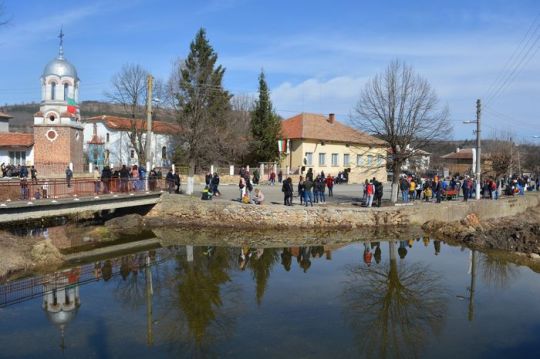
King Ivan II Assen
During a siege of Thessaloniki the third brother also fell victim to another boyar plot: in the autumn of 1207 he was killed in his tent. One of the plotters – and nephew to Kaloyan – King Boril (1207-1218) ascended to the throne. A political crisis broke up. As the usurper Boril initiated a persecution of all Kaloyan’s relatives his two nephews, sons of the old king Assen, Ivan Assen and Alexander, lied to Russia. For some time, however, the conflicts along the borders of the country were suspended due to the treaties with the Lati n Empire and the Hungarian Kingdom but the resentment within sharpened Tours Bulgaria.
A factor that additionally jeopardized the crown became the movement of the Bogomils. So in 1211 Boril held the Council of Tumovo which condemned the new heresy. Uprisings broke up. Taking advantage of the confusion and assisted by a Russian military unit Ivan Assen II laid a continuous siege to the capital Tumovo, dethroned Boril and blinded him. Thus the successor of the Dynasty of the Assenids. King Ivan II Assen (1218-1241) came to the throne.
Ivan II Assen inaugurated a period of prosperity during which Bulgaria regained the frontiers it had achieved under Tsar Simeon the Great.
Diplomacy consolidated
An economic and cultural upsurge marked his rule. The new king’s diplomacy consolidated the state and strengthened the relations with the Latin Empire and Hungary. A peace treaty was signed with the ruler of the Epirus region Theodore Comnenus.
Ivan II Assen even engaged his daughter Elena to the Byzantine Emperor Baldwin II, still under age by the time.
But Theodore Comnenus violated the peace treaty and led a large army north- The Church of the Virgin of Petrich in Ivan II Assens Fortress.
0 notes
Photo
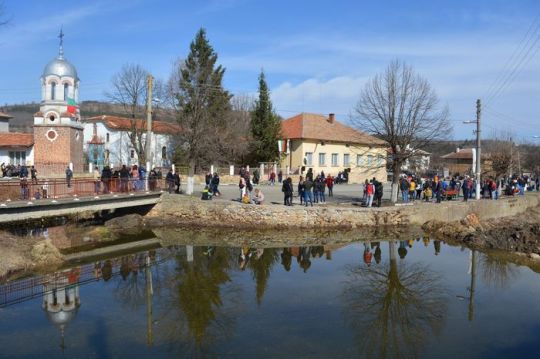
King Ivan II Assen
During a siege of Thessaloniki the third brother also fell victim to another boyar plot: in the autumn of 1207 he was killed in his tent. One of the plotters – and nephew to Kaloyan – King Boril (1207-1218) ascended to the throne. A political crisis broke up. As the usurper Boril initiated a persecution of all Kaloyan’s relatives his two nephews, sons of the old king Assen, Ivan Assen and Alexander, lied to Russia. For some time, however, the conflicts along the borders of the country were suspended due to the treaties with the Lati n Empire and the Hungarian Kingdom but the resentment within sharpened Tours Bulgaria.
A factor that additionally jeopardized the crown became the movement of the Bogomils. So in 1211 Boril held the Council of Tumovo which condemned the new heresy. Uprisings broke up. Taking advantage of the confusion and assisted by a Russian military unit Ivan Assen II laid a continuous siege to the capital Tumovo, dethroned Boril and blinded him. Thus the successor of the Dynasty of the Assenids. King Ivan II Assen (1218-1241) came to the throne.
Ivan II Assen inaugurated a period of prosperity during which Bulgaria regained the frontiers it had achieved under Tsar Simeon the Great.
Diplomacy consolidated
An economic and cultural upsurge marked his rule. The new king’s diplomacy consolidated the state and strengthened the relations with the Latin Empire and Hungary. A peace treaty was signed with the ruler of the Epirus region Theodore Comnenus.
Ivan II Assen even engaged his daughter Elena to the Byzantine Emperor Baldwin II, still under age by the time.
But Theodore Comnenus violated the peace treaty and led a large army north- The Church of the Virgin of Petrich in Ivan II Assens Fortress.
0 notes
Photo
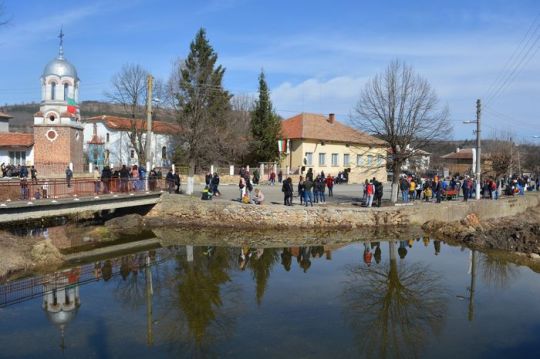
King Ivan II Assen
During a siege of Thessaloniki the third brother also fell victim to another boyar plot: in the autumn of 1207 he was killed in his tent. One of the plotters – and nephew to Kaloyan – King Boril (1207-1218) ascended to the throne. A political crisis broke up. As the usurper Boril initiated a persecution of all Kaloyan’s relatives his two nephews, sons of the old king Assen, Ivan Assen and Alexander, lied to Russia. For some time, however, the conflicts along the borders of the country were suspended due to the treaties with the Lati n Empire and the Hungarian Kingdom but the resentment within sharpened Tours Bulgaria.
A factor that additionally jeopardized the crown became the movement of the Bogomils. So in 1211 Boril held the Council of Tumovo which condemned the new heresy. Uprisings broke up. Taking advantage of the confusion and assisted by a Russian military unit Ivan Assen II laid a continuous siege to the capital Tumovo, dethroned Boril and blinded him. Thus the successor of the Dynasty of the Assenids. King Ivan II Assen (1218-1241) came to the throne.
Ivan II Assen inaugurated a period of prosperity during which Bulgaria regained the frontiers it had achieved under Tsar Simeon the Great.
Diplomacy consolidated
An economic and cultural upsurge marked his rule. The new king’s diplomacy consolidated the state and strengthened the relations with the Latin Empire and Hungary. A peace treaty was signed with the ruler of the Epirus region Theodore Comnenus.
Ivan II Assen even engaged his daughter Elena to the Byzantine Emperor Baldwin II, still under age by the time.
But Theodore Comnenus violated the peace treaty and led a large army north- The Church of the Virgin of Petrich in Ivan II Assens Fortress.
0 notes
Photo

King Ivan II Assen
During a siege of Thessaloniki the third brother also fell victim to another boyar plot: in the autumn of 1207 he was killed in his tent. One of the plotters – and nephew to Kaloyan – King Boril (1207-1218) ascended to the throne. A political crisis broke up. As the usurper Boril initiated a persecution of all Kaloyan’s relatives his two nephews, sons of the old king Assen, Ivan Assen and Alexander, lied to Russia. For some time, however, the conflicts along the borders of the country were suspended due to the treaties with the Lati n Empire and the Hungarian Kingdom but the resentment within sharpened Tours Bulgaria.
A factor that additionally jeopardized the crown became the movement of the Bogomils. So in 1211 Boril held the Council of Tumovo which condemned the new heresy. Uprisings broke up. Taking advantage of the confusion and assisted by a Russian military unit Ivan Assen II laid a continuous siege to the capital Tumovo, dethroned Boril and blinded him. Thus the successor of the Dynasty of the Assenids. King Ivan II Assen (1218-1241) came to the throne.
Ivan II Assen inaugurated a period of prosperity during which Bulgaria regained the frontiers it had achieved under Tsar Simeon the Great.
Diplomacy consolidated
An economic and cultural upsurge marked his rule. The new king’s diplomacy consolidated the state and strengthened the relations with the Latin Empire and Hungary. A peace treaty was signed with the ruler of the Epirus region Theodore Comnenus.
Ivan II Assen even engaged his daughter Elena to the Byzantine Emperor Baldwin II, still under age by the time.
But Theodore Comnenus violated the peace treaty and led a large army north- The Church of the Virgin of Petrich in Ivan II Assens Fortress.
0 notes
Photo

King Ivan II Assen
During a siege of Thessaloniki the third brother also fell victim to another boyar plot: in the autumn of 1207 he was killed in his tent. One of the plotters – and nephew to Kaloyan – King Boril (1207-1218) ascended to the throne. A political crisis broke up. As the usurper Boril initiated a persecution of all Kaloyan’s relatives his two nephews, sons of the old king Assen, Ivan Assen and Alexander, lied to Russia. For some time, however, the conflicts along the borders of the country were suspended due to the treaties with the Lati n Empire and the Hungarian Kingdom but the resentment within sharpened Tours Bulgaria.
A factor that additionally jeopardized the crown became the movement of the Bogomils. So in 1211 Boril held the Council of Tumovo which condemned the new heresy. Uprisings broke up. Taking advantage of the confusion and assisted by a Russian military unit Ivan Assen II laid a continuous siege to the capital Tumovo, dethroned Boril and blinded him. Thus the successor of the Dynasty of the Assenids. King Ivan II Assen (1218-1241) came to the throne.
Ivan II Assen inaugurated a period of prosperity during which Bulgaria regained the frontiers it had achieved under Tsar Simeon the Great.
Diplomacy consolidated
An economic and cultural upsurge marked his rule. The new king’s diplomacy consolidated the state and strengthened the relations with the Latin Empire and Hungary. A peace treaty was signed with the ruler of the Epirus region Theodore Comnenus.
Ivan II Assen even engaged his daughter Elena to the Byzantine Emperor Baldwin II, still under age by the time.
But Theodore Comnenus violated the peace treaty and led a large army north- The Church of the Virgin of Petrich in Ivan II Assens Fortress.
0 notes
Photo
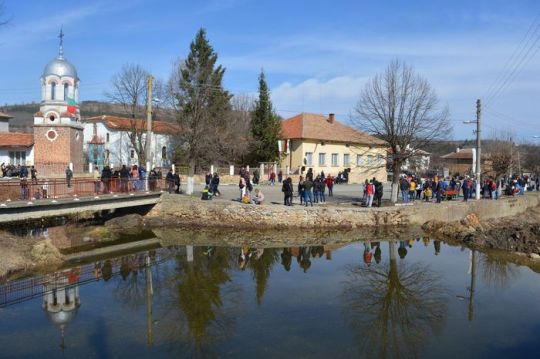
King Ivan II Assen
During a siege of Thessaloniki the third brother also fell victim to another boyar plot: in the autumn of 1207 he was killed in his tent. One of the plotters – and nephew to Kaloyan – King Boril (1207-1218) ascended to the throne. A political crisis broke up. As the usurper Boril initiated a persecution of all Kaloyan’s relatives his two nephews, sons of the old king Assen, Ivan Assen and Alexander, lied to Russia. For some time, however, the conflicts along the borders of the country were suspended due to the treaties with the Lati n Empire and the Hungarian Kingdom but the resentment within sharpened Tours Bulgaria.
A factor that additionally jeopardized the crown became the movement of the Bogomils. So in 1211 Boril held the Council of Tumovo which condemned the new heresy. Uprisings broke up. Taking advantage of the confusion and assisted by a Russian military unit Ivan Assen II laid a continuous siege to the capital Tumovo, dethroned Boril and blinded him. Thus the successor of the Dynasty of the Assenids. King Ivan II Assen (1218-1241) came to the throne.
Ivan II Assen inaugurated a period of prosperity during which Bulgaria regained the frontiers it had achieved under Tsar Simeon the Great.
Diplomacy consolidated
An economic and cultural upsurge marked his rule. The new king’s diplomacy consolidated the state and strengthened the relations with the Latin Empire and Hungary. A peace treaty was signed with the ruler of the Epirus region Theodore Comnenus.
Ivan II Assen even engaged his daughter Elena to the Byzantine Emperor Baldwin II, still under age by the time.
But Theodore Comnenus violated the peace treaty and led a large army north- The Church of the Virgin of Petrich in Ivan II Assens Fortress.
0 notes
Photo
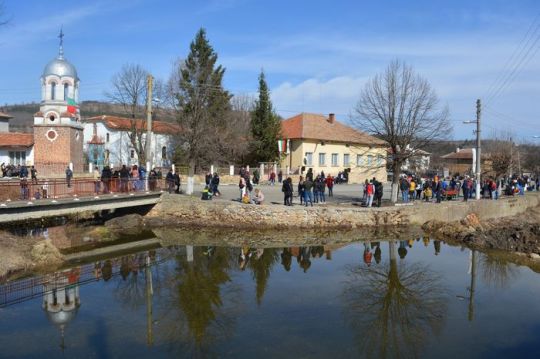
King Ivan II Assen
During a siege of Thessaloniki the third brother also fell victim to another boyar plot: in the autumn of 1207 he was killed in his tent. One of the plotters – and nephew to Kaloyan – King Boril (1207-1218) ascended to the throne. A political crisis broke up. As the usurper Boril initiated a persecution of all Kaloyan’s relatives his two nephews, sons of the old king Assen, Ivan Assen and Alexander, lied to Russia. For some time, however, the conflicts along the borders of the country were suspended due to the treaties with the Lati n Empire and the Hungarian Kingdom but the resentment within sharpened Tours Bulgaria.
A factor that additionally jeopardized the crown became the movement of the Bogomils. So in 1211 Boril held the Council of Tumovo which condemned the new heresy. Uprisings broke up. Taking advantage of the confusion and assisted by a Russian military unit Ivan Assen II laid a continuous siege to the capital Tumovo, dethroned Boril and blinded him. Thus the successor of the Dynasty of the Assenids. King Ivan II Assen (1218-1241) came to the throne.
Ivan II Assen inaugurated a period of prosperity during which Bulgaria regained the frontiers it had achieved under Tsar Simeon the Great.
Diplomacy consolidated
An economic and cultural upsurge marked his rule. The new king’s diplomacy consolidated the state and strengthened the relations with the Latin Empire and Hungary. A peace treaty was signed with the ruler of the Epirus region Theodore Comnenus.
Ivan II Assen even engaged his daughter Elena to the Byzantine Emperor Baldwin II, still under age by the time.
But Theodore Comnenus violated the peace treaty and led a large army north- The Church of the Virgin of Petrich in Ivan II Assens Fortress.
0 notes
Photo
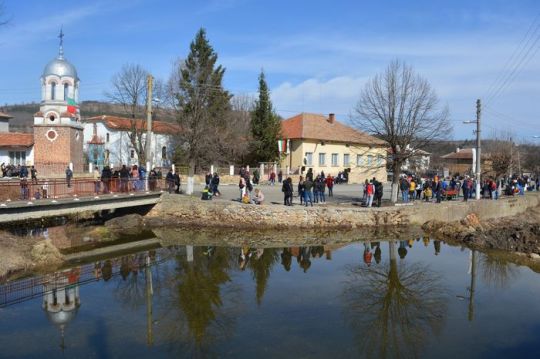
King Ivan II Assen
During a siege of Thessaloniki the third brother also fell victim to another boyar plot: in the autumn of 1207 he was killed in his tent. One of the plotters – and nephew to Kaloyan – King Boril (1207-1218) ascended to the throne. A political crisis broke up. As the usurper Boril initiated a persecution of all Kaloyan’s relatives his two nephews, sons of the old king Assen, Ivan Assen and Alexander, lied to Russia. For some time, however, the conflicts along the borders of the country were suspended due to the treaties with the Lati n Empire and the Hungarian Kingdom but the resentment within sharpened Tours Bulgaria.
A factor that additionally jeopardized the crown became the movement of the Bogomils. So in 1211 Boril held the Council of Tumovo which condemned the new heresy. Uprisings broke up. Taking advantage of the confusion and assisted by a Russian military unit Ivan Assen II laid a continuous siege to the capital Tumovo, dethroned Boril and blinded him. Thus the successor of the Dynasty of the Assenids. King Ivan II Assen (1218-1241) came to the throne.
Ivan II Assen inaugurated a period of prosperity during which Bulgaria regained the frontiers it had achieved under Tsar Simeon the Great.
Diplomacy consolidated
An economic and cultural upsurge marked his rule. The new king’s diplomacy consolidated the state and strengthened the relations with the Latin Empire and Hungary. A peace treaty was signed with the ruler of the Epirus region Theodore Comnenus.
Ivan II Assen even engaged his daughter Elena to the Byzantine Emperor Baldwin II, still under age by the time.
But Theodore Comnenus violated the peace treaty and led a large army north- The Church of the Virgin of Petrich in Ivan II Assens Fortress.
0 notes
Photo
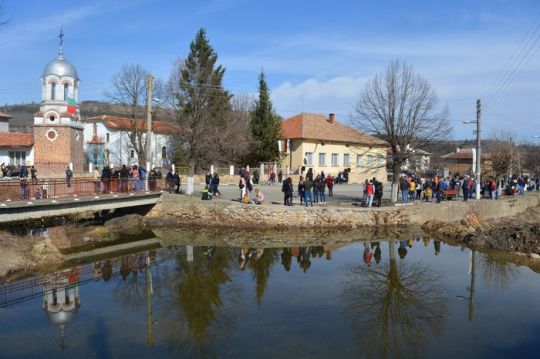
King Ivan II Assen
During a siege of Thessaloniki the third brother also fell victim to another boyar plot: in the autumn of 1207 he was killed in his tent. One of the plotters – and nephew to Kaloyan – King Boril (1207-1218) ascended to the throne. A political crisis broke up. As the usurper Boril initiated a persecution of all Kaloyan’s relatives his two nephews, sons of the old king Assen, Ivan Assen and Alexander, lied to Russia. For some time, however, the conflicts along the borders of the country were suspended due to the treaties with the Lati n Empire and the Hungarian Kingdom but the resentment within sharpened Tours Bulgaria.
A factor that additionally jeopardized the crown became the movement of the Bogomils. So in 1211 Boril held the Council of Tumovo which condemned the new heresy. Uprisings broke up. Taking advantage of the confusion and assisted by a Russian military unit Ivan Assen II laid a continuous siege to the capital Tumovo, dethroned Boril and blinded him. Thus the successor of the Dynasty of the Assenids. King Ivan II Assen (1218-1241) came to the throne.
Ivan II Assen inaugurated a period of prosperity during which Bulgaria regained the frontiers it had achieved under Tsar Simeon the Great.
Diplomacy consolidated
An economic and cultural upsurge marked his rule. The new king’s diplomacy consolidated the state and strengthened the relations with the Latin Empire and Hungary. A peace treaty was signed with the ruler of the Epirus region Theodore Comnenus.
Ivan II Assen even engaged his daughter Elena to the Byzantine Emperor Baldwin II, still under age by the time.
But Theodore Comnenus violated the peace treaty and led a large army north- The Church of the Virgin of Petrich in Ivan II Assens Fortress.
0 notes
Photo

King Ivan II Assen
During a siege of Thessaloniki the third brother also fell victim to another boyar plot: in the autumn of 1207 he was killed in his tent. One of the plotters – and nephew to Kaloyan – King Boril (1207-1218) ascended to the throne. A political crisis broke up. As the usurper Boril initiated a persecution of all Kaloyan’s relatives his two nephews, sons of the old king Assen, Ivan Assen and Alexander, lied to Russia. For some time, however, the conflicts along the borders of the country were suspended due to the treaties with the Lati n Empire and the Hungarian Kingdom but the resentment within sharpened Tours Bulgaria.
A factor that additionally jeopardized the crown became the movement of the Bogomils. So in 1211 Boril held the Council of Tumovo which condemned the new heresy. Uprisings broke up. Taking advantage of the confusion and assisted by a Russian military unit Ivan Assen II laid a continuous siege to the capital Tumovo, dethroned Boril and blinded him. Thus the successor of the Dynasty of the Assenids. King Ivan II Assen (1218-1241) came to the throne.
Ivan II Assen inaugurated a period of prosperity during which Bulgaria regained the frontiers it had achieved under Tsar Simeon the Great.
Diplomacy consolidated
An economic and cultural upsurge marked his rule. The new king’s diplomacy consolidated the state and strengthened the relations with the Latin Empire and Hungary. A peace treaty was signed with the ruler of the Epirus region Theodore Comnenus.
Ivan II Assen even engaged his daughter Elena to the Byzantine Emperor Baldwin II, still under age by the time.
But Theodore Comnenus violated the peace treaty and led a large army north- The Church of the Virgin of Petrich in Ivan II Assens Fortress.
0 notes
Photo

King Ivan II Assen
During a siege of Thessaloniki the third brother also fell victim to another boyar plot: in the autumn of 1207 he was killed in his tent. One of the plotters – and nephew to Kaloyan – King Boril (1207-1218) ascended to the throne. A political crisis broke up. As the usurper Boril initiated a persecution of all Kaloyan’s relatives his two nephews, sons of the old king Assen, Ivan Assen and Alexander, lied to Russia. For some time, however, the conflicts along the borders of the country were suspended due to the treaties with the Lati n Empire and the Hungarian Kingdom but the resentment within sharpened Tours Bulgaria.
A factor that additionally jeopardized the crown became the movement of the Bogomils. So in 1211 Boril held the Council of Tumovo which condemned the new heresy. Uprisings broke up. Taking advantage of the confusion and assisted by a Russian military unit Ivan Assen II laid a continuous siege to the capital Tumovo, dethroned Boril and blinded him. Thus the successor of the Dynasty of the Assenids. King Ivan II Assen (1218-1241) came to the throne.
Ivan II Assen inaugurated a period of prosperity during which Bulgaria regained the frontiers it had achieved under Tsar Simeon the Great.
Diplomacy consolidated
An economic and cultural upsurge marked his rule. The new king’s diplomacy consolidated the state and strengthened the relations with the Latin Empire and Hungary. A peace treaty was signed with the ruler of the Epirus region Theodore Comnenus.
Ivan II Assen even engaged his daughter Elena to the Byzantine Emperor Baldwin II, still under age by the time.
But Theodore Comnenus violated the peace treaty and led a large army north- The Church of the Virgin of Petrich in Ivan II Assens Fortress.
0 notes
Photo
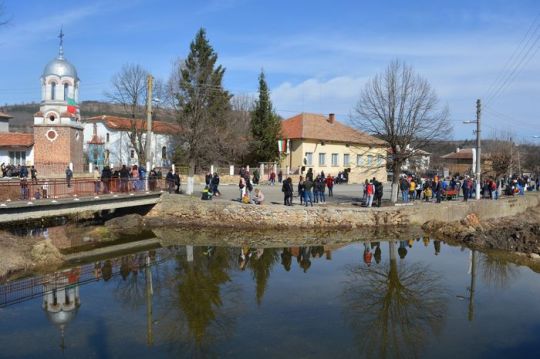
King Ivan II Assen
During a siege of Thessaloniki the third brother also fell victim to another boyar plot: in the autumn of 1207 he was killed in his tent. One of the plotters – and nephew to Kaloyan – King Boril (1207-1218) ascended to the throne. A political crisis broke up. As the usurper Boril initiated a persecution of all Kaloyan’s relatives his two nephews, sons of the old king Assen, Ivan Assen and Alexander, lied to Russia. For some time, however, the conflicts along the borders of the country were suspended due to the treaties with the Lati n Empire and the Hungarian Kingdom but the resentment within sharpened Tours Bulgaria.
A factor that additionally jeopardized the crown became the movement of the Bogomils. So in 1211 Boril held the Council of Tumovo which condemned the new heresy. Uprisings broke up. Taking advantage of the confusion and assisted by a Russian military unit Ivan Assen II laid a continuous siege to the capital Tumovo, dethroned Boril and blinded him. Thus the successor of the Dynasty of the Assenids. King Ivan II Assen (1218-1241) came to the throne.
Ivan II Assen inaugurated a period of prosperity during which Bulgaria regained the frontiers it had achieved under Tsar Simeon the Great.
Diplomacy consolidated
An economic and cultural upsurge marked his rule. The new king’s diplomacy consolidated the state and strengthened the relations with the Latin Empire and Hungary. A peace treaty was signed with the ruler of the Epirus region Theodore Comnenus.
Ivan II Assen even engaged his daughter Elena to the Byzantine Emperor Baldwin II, still under age by the time.
But Theodore Comnenus violated the peace treaty and led a large army north- The Church of the Virgin of Petrich in Ivan II Assens Fortress.
0 notes
Photo

Byzantine army near Klokotnitsa
In March 1230 the Bulgarians gained a brilliant victory over the Byzantine army near Klokotnitsa after which got hold of Macedonia, Albania, the Rhodopes and the Aegean. Once again Bulgaria stretched its borders to the shores of three seas…
Dynasty of the Assenids
The indisputable Bulgarian hegemony of South-Eastern Europe made the Pope in Rome get concerned with the future of the Latin Empire. His emissaries instigated the Hungarians to attack Bulgaria from the north but soon this new threat was eliminated by the Bulgarian sword. The consid-erable territorial expansion of the Second Bulgarian Kingdom was followed by peaceful years that led to economic growth. For the first time the Bulgarian king Ivan II Assen initiated the minting of coins…
The Bogomils and other religious movements in Medieval Bulgaria Undoubtedly, the dynasty of the Assenids (1186-1280) prompted the power and the prestige of the Second Bulgarian Kingdom in the European Medieval world. But, of course, its history also knew periods of social and political crises. The incessant growth of private property and the deeper stratifi-cation of the population in the rural commune contributed to the sharpening of the relations between the ranks of the people and the upper strata of the Bulgarian society Tours Bulgaria. In such periods emerged and developed certain social and religious movements. The Bogomil movement distinguished not only by the dualistic religious beliefs – a conception of the two principles: good and evil – but also by political nationalism and resentment of Byzantine culture. Observing the mismatch between words and deeds of the clergy, people started gradually losing faith in the Christian religion. The Bogomils renounced the official church, its symbols and rites, as well as the need for its ministers. They preached rejection of luxury, riches and bodily pleasures; repudiated marriage; renounced violence, war and cruelty.
Bogomil movement
Between the 9th and the 12th century the Bogomil movement penetrated into Byzantium, Serbia, Wallachia, Kievan Russia, and in the centuries that followed it spread to Italy and France. In the Western world the followers of the Bogomil teaching were called Cathars and Albigenses. Later, in the 14th cen-tury also appeared the teaching of the Adamites who claimed that social inequality was not of a divine origin, so they called on people not to wear clothes: like Adam, the first man in Eden. Again in the 14th century under the influence of Byzantium among the Bulgarian monks penetrated Hesychasm [from the Greek hesychazo, e. g. “being silent”] – an ascetic and meditative teaching. Also from Byzantium came the philosophical and religious doctrine of Varlaam and Akindin called Varlaamism which contained many rational elements combined with criticism of the sumptuous and costly church rituals. And, on the eve of Bulgaria’s fall under Turkish subjugation, the heresy of the Jews was quite widespread as well.
0 notes
Photo

Byzantine army near Klokotnitsa
In March 1230 the Bulgarians gained a brilliant victory over the Byzantine army near Klokotnitsa after which got hold of Macedonia, Albania, the Rhodopes and the Aegean. Once again Bulgaria stretched its borders to the shores of three seas…
Dynasty of the Assenids
The indisputable Bulgarian hegemony of South-Eastern Europe made the Pope in Rome get concerned with the future of the Latin Empire. His emissaries instigated the Hungarians to attack Bulgaria from the north but soon this new threat was eliminated by the Bulgarian sword. The consid-erable territorial expansion of the Second Bulgarian Kingdom was followed by peaceful years that led to economic growth. For the first time the Bulgarian king Ivan II Assen initiated the minting of coins…
The Bogomils and other religious movements in Medieval Bulgaria Undoubtedly, the dynasty of the Assenids (1186-1280) prompted the power and the prestige of the Second Bulgarian Kingdom in the European Medieval world. But, of course, its history also knew periods of social and political crises. The incessant growth of private property and the deeper stratifi-cation of the population in the rural commune contributed to the sharpening of the relations between the ranks of the people and the upper strata of the Bulgarian society Tours Bulgaria. In such periods emerged and developed certain social and religious movements. The Bogomil movement distinguished not only by the dualistic religious beliefs – a conception of the two principles: good and evil – but also by political nationalism and resentment of Byzantine culture. Observing the mismatch between words and deeds of the clergy, people started gradually losing faith in the Christian religion. The Bogomils renounced the official church, its symbols and rites, as well as the need for its ministers. They preached rejection of luxury, riches and bodily pleasures; repudiated marriage; renounced violence, war and cruelty.
Bogomil movement
Between the 9th and the 12th century the Bogomil movement penetrated into Byzantium, Serbia, Wallachia, Kievan Russia, and in the centuries that followed it spread to Italy and France. In the Western world the followers of the Bogomil teaching were called Cathars and Albigenses. Later, in the 14th cen-tury also appeared the teaching of the Adamites who claimed that social inequality was not of a divine origin, so they called on people not to wear clothes: like Adam, the first man in Eden. Again in the 14th century under the influence of Byzantium among the Bulgarian monks penetrated Hesychasm [from the Greek hesychazo, e. g. “being silent”] – an ascetic and meditative teaching. Also from Byzantium came the philosophical and religious doctrine of Varlaam and Akindin called Varlaamism which contained many rational elements combined with criticism of the sumptuous and costly church rituals. And, on the eve of Bulgaria’s fall under Turkish subjugation, the heresy of the Jews was quite widespread as well.
0 notes
Photo

Byzantine army near Klokotnitsa
In March 1230 the Bulgarians gained a brilliant victory over the Byzantine army near Klokotnitsa after which got hold of Macedonia, Albania, the Rhodopes and the Aegean. Once again Bulgaria stretched its borders to the shores of three seas…
Dynasty of the Assenids
The indisputable Bulgarian hegemony of South-Eastern Europe made the Pope in Rome get concerned with the future of the Latin Empire. His emissaries instigated the Hungarians to attack Bulgaria from the north but soon this new threat was eliminated by the Bulgarian sword. The consid-erable territorial expansion of the Second Bulgarian Kingdom was followed by peaceful years that led to economic growth. For the first time the Bulgarian king Ivan II Assen initiated the minting of coins…
The Bogomils and other religious movements in Medieval Bulgaria Undoubtedly, the dynasty of the Assenids (1186-1280) prompted the power and the prestige of the Second Bulgarian Kingdom in the European Medieval world. But, of course, its history also knew periods of social and political crises. The incessant growth of private property and the deeper stratifi-cation of the population in the rural commune contributed to the sharpening of the relations between the ranks of the people and the upper strata of the Bulgarian society Tours Bulgaria. In such periods emerged and developed certain social and religious movements. The Bogomil movement distinguished not only by the dualistic religious beliefs – a conception of the two principles: good and evil – but also by political nationalism and resentment of Byzantine culture. Observing the mismatch between words and deeds of the clergy, people started gradually losing faith in the Christian religion. The Bogomils renounced the official church, its symbols and rites, as well as the need for its ministers. They preached rejection of luxury, riches and bodily pleasures; repudiated marriage; renounced violence, war and cruelty.
Bogomil movement
Between the 9th and the 12th century the Bogomil movement penetrated into Byzantium, Serbia, Wallachia, Kievan Russia, and in the centuries that followed it spread to Italy and France. In the Western world the followers of the Bogomil teaching were called Cathars and Albigenses. Later, in the 14th cen-tury also appeared the teaching of the Adamites who claimed that social inequality was not of a divine origin, so they called on people not to wear clothes: like Adam, the first man in Eden. Again in the 14th century under the influence of Byzantium among the Bulgarian monks penetrated Hesychasm [from the Greek hesychazo, e. g. “being silent”] – an ascetic and meditative teaching. Also from Byzantium came the philosophical and religious doctrine of Varlaam and Akindin called Varlaamism which contained many rational elements combined with criticism of the sumptuous and costly church rituals. And, on the eve of Bulgaria’s fall under Turkish subjugation, the heresy of the Jews was quite widespread as well.
0 notes
Photo

Byzantine army near Klokotnitsa
In March 1230 the Bulgarians gained a brilliant victory over the Byzantine army near Klokotnitsa after which got hold of Macedonia, Albania, the Rhodopes and the Aegean. Once again Bulgaria stretched its borders to the shores of three seas…
Dynasty of the Assenids
The indisputable Bulgarian hegemony of South-Eastern Europe made the Pope in Rome get concerned with the future of the Latin Empire. His emissaries instigated the Hungarians to attack Bulgaria from the north but soon this new threat was eliminated by the Bulgarian sword. The consid-erable territorial expansion of the Second Bulgarian Kingdom was followed by peaceful years that led to economic growth. For the first time the Bulgarian king Ivan II Assen initiated the minting of coins…
The Bogomils and other religious movements in Medieval Bulgaria Undoubtedly, the dynasty of the Assenids (1186-1280) prompted the power and the prestige of the Second Bulgarian Kingdom in the European Medieval world. But, of course, its history also knew periods of social and political crises. The incessant growth of private property and the deeper stratifi-cation of the population in the rural commune contributed to the sharpening of the relations between the ranks of the people and the upper strata of the Bulgarian society Tours Bulgaria. In such periods emerged and developed certain social and religious movements. The Bogomil movement distinguished not only by the dualistic religious beliefs – a conception of the two principles: good and evil – but also by political nationalism and resentment of Byzantine culture. Observing the mismatch between words and deeds of the clergy, people started gradually losing faith in the Christian religion. The Bogomils renounced the official church, its symbols and rites, as well as the need for its ministers. They preached rejection of luxury, riches and bodily pleasures; repudiated marriage; renounced violence, war and cruelty.
Bogomil movement
Between the 9th and the 12th century the Bogomil movement penetrated into Byzantium, Serbia, Wallachia, Kievan Russia, and in the centuries that followed it spread to Italy and France. In the Western world the followers of the Bogomil teaching were called Cathars and Albigenses. Later, in the 14th cen-tury also appeared the teaching of the Adamites who claimed that social inequality was not of a divine origin, so they called on people not to wear clothes: like Adam, the first man in Eden. Again in the 14th century under the influence of Byzantium among the Bulgarian monks penetrated Hesychasm [from the Greek hesychazo, e. g. “being silent”] – an ascetic and meditative teaching. Also from Byzantium came the philosophical and religious doctrine of Varlaam and Akindin called Varlaamism which contained many rational elements combined with criticism of the sumptuous and costly church rituals. And, on the eve of Bulgaria’s fall under Turkish subjugation, the heresy of the Jews was quite widespread as well.
0 notes